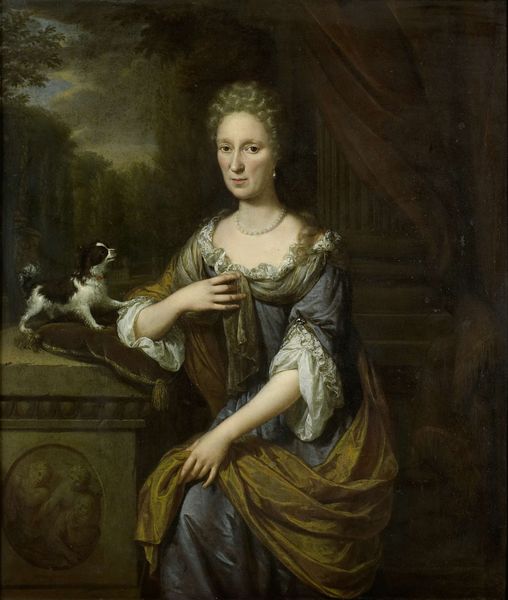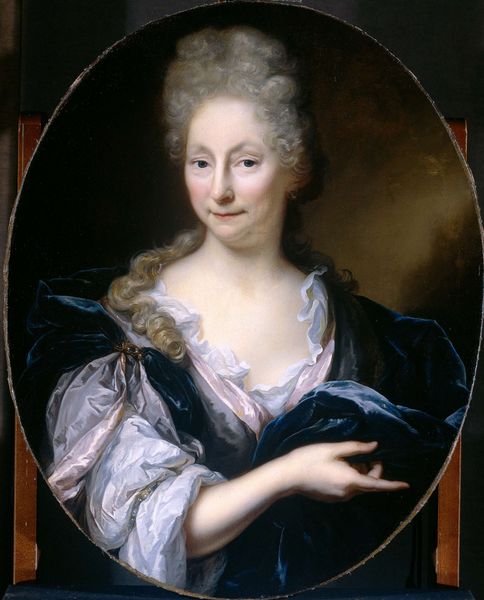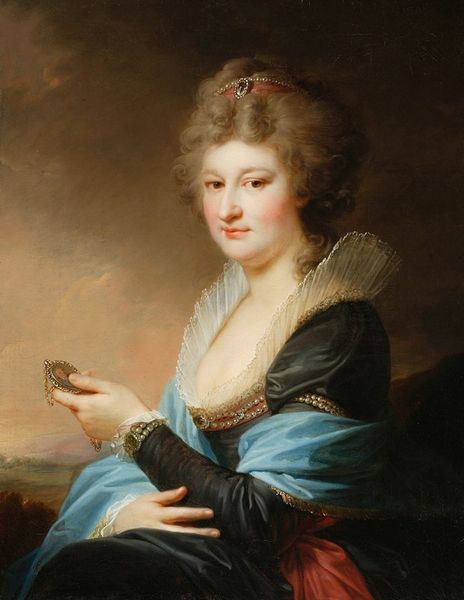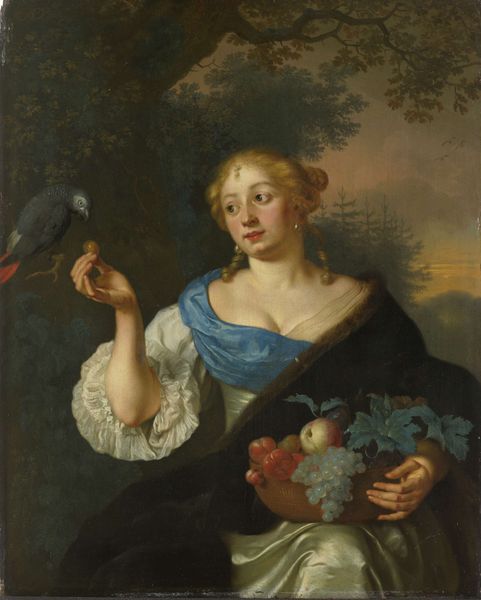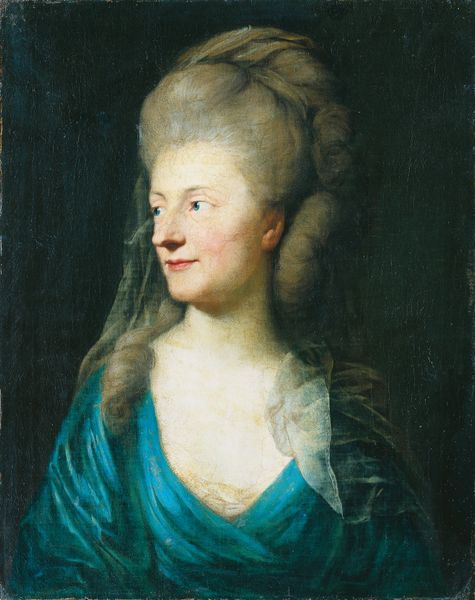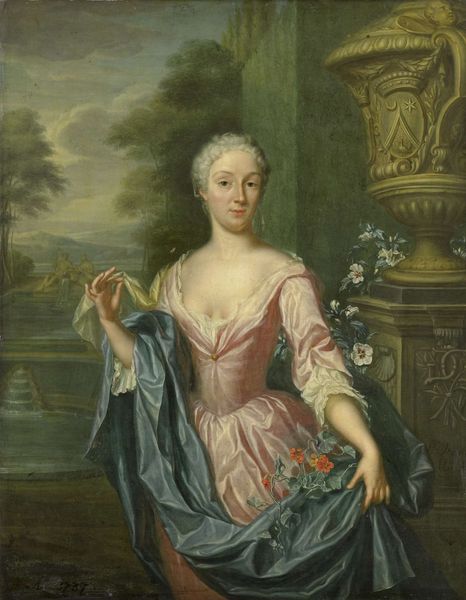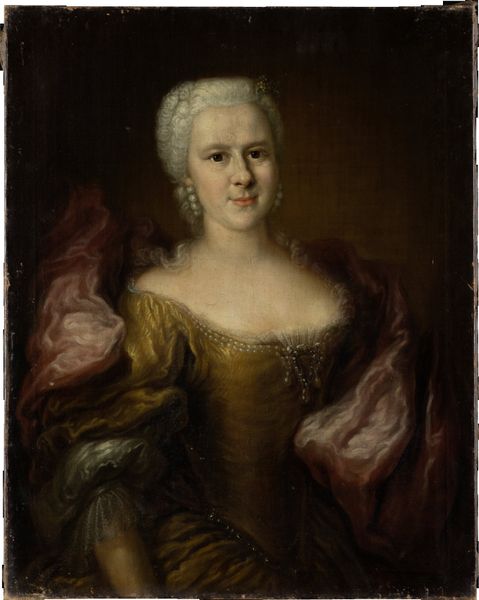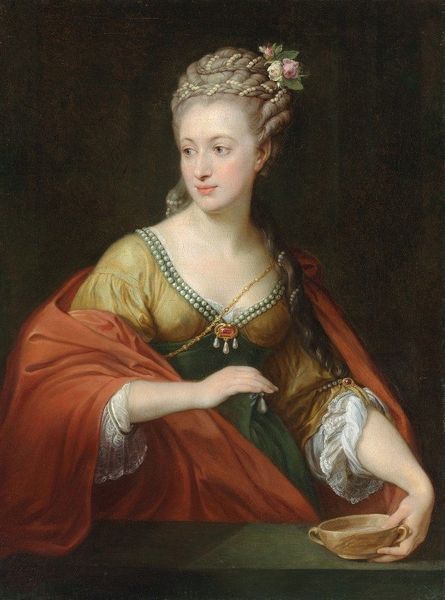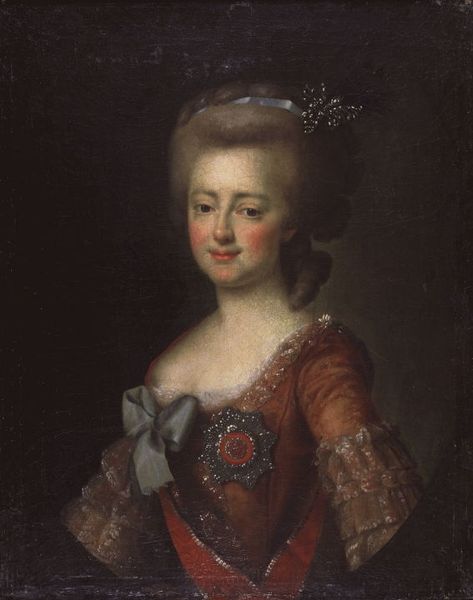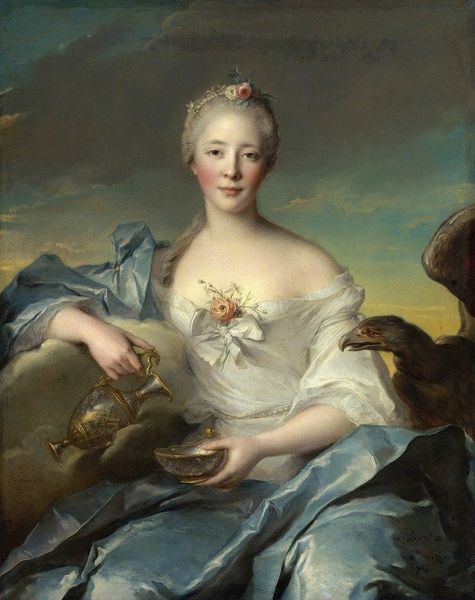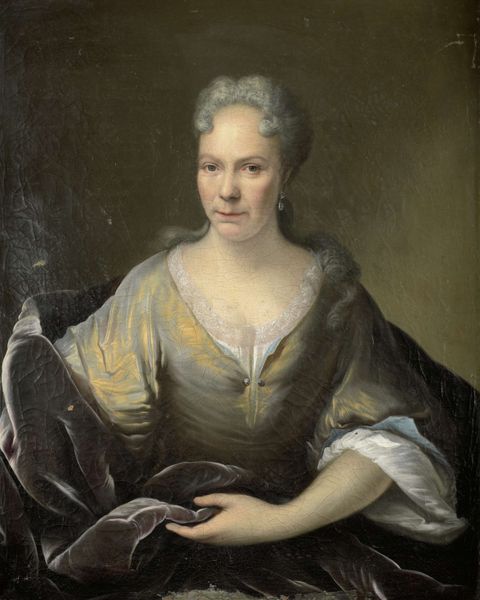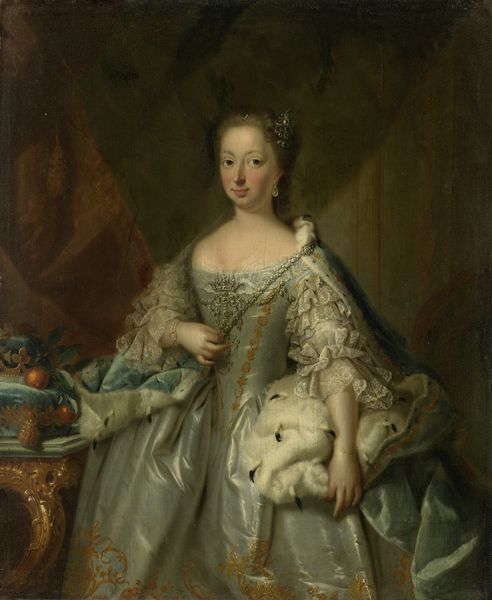
Portrait of Maria Magdalena Stavenisse, Wife of Jacob de Witte of Elkerzee, Councilor of Zierikzee c. 1726
0:00
0:00
painting, oil-paint
#
portrait
#
baroque
#
painting
#
oil-paint
#
oil painting
#
portrait reference
#
genre-painting
#
portrait art
Dimensions: height 56 cm, width 45 cm, depth 6 cm
Copyright: Rijks Museum: Open Domain
Curator: We’re now looking at Cornelis Troost’s "Portrait of Maria Magdalena Stavenisse, Wife of Jacob de Witte of Elkerzee, Councilor of Zierikzee," created around 1726. It’s a beautiful example of Dutch Baroque portraiture hanging here at the Rijksmuseum. Editor: It's strikingly composed. The subdued palette and the pose of the subject create a fascinating sense of detachment. There's something quite theatrical about her presentation, an almost sculptural presence against that deep backdrop. Curator: Indeed. The subject is presented almost symmetrically, drawing immediate attention to her facial features. We can analyze the geometry of the forms – the interplay of the circle of her face with the draping fabric, the rectangular solid behind. Her gaze is direct, and that small, enigmatic smile provides another point of engagement for us as viewers. Editor: And that parrot! Its bright plumage adds a striking splash of contrast against the otherwise muted tones, immediately drawing the eye. But why a parrot? Is it simply an exotic pet, or something more? Curator: Absolutely, and parrots often symbolize status, luxury, or worldly knowledge. Their exotic origin speaks to trade and wealth. Moreover, in Christian iconography, birds can symbolize the soul. Editor: I notice her elegant, but very simple beaded jewelry: bracelet, earrings and at her chest, where she appears to be pointing towards with a simple graceful finger gesture. She is a respectable and wealthy woman but perhaps one who wants to signal modesty as well. What do you think of that little gesture of pointing at herself? Is this her moment in the portrait to point at herself? Curator: Interesting observation! Formally, that small hand gesture interrupts the implied diagonal formed by the arm holding the parrot. The subtle tension created reinforces her controlled elegance within the confines of portraiture convention. But the simplicity is deceptive—there’s an almost architectural layering in the velvet gown that gives her bulk but never reads as vulgar or opulent. The textural contrast between skin and the fabric is brilliantly observed. Editor: Ultimately, for me, this portrait reveals not just a physical likeness, but an entire world of status symbols and perhaps a glimpse into the psychology of 18th-century Dutch society. Curator: A superb instance of how a formal structure provides a stable framework for exploring historical content.
Comments
No comments
Be the first to comment and join the conversation on the ultimate creative platform.

